Walking in Chongqing, an unforgettable corner (massive pictures)
There is a strange phenomenon that I rarely see scenic spot product designs related to the history of the Anti Japanese War and the revolution in major tourist destinations in Chongqing. Only one attraction of the Zhazidong concentration camp was included in the one-day trip within the city.
In 1937, the iron hooves of the Japanese swept across the Central Plains, and the government of the Republic of China moved from Nanjing to Chongqing. As a result, Chongqing became the wartime capital of the eight year Anti Japanese War. It also became a wartime command center. Thus, Chongqing has made a significant contribution to the history of China. The Kuomintang and the Communist Party collaborated to perform a series of battles of intelligence and courage in Chongqing, which were both cooperative and covert. As the wartime capital, temporary presidential palace, major government agencies, and official residences of various celebrities, have there been any traces left? As someone who loves to explore the truth of history, I couldn't help but feel tempted. So, I spent two days taking buses, subways, and taxis in rotation, searching my phone frequently for relevant historical traces.
The first one to look for is the "Museum of Anti Japanese War Historical Sites" located in Nanshan, Chongqing, also known as Nanshan Villa or Mount Huangshan Villa.

Main Gate of Nanshan (Mount Huangshan Villa) Group

The above picture is a tour guide map of the Chongqing Anti Japanese War History Museum (Nanshan Villa Complex)
Nanshan is located on the south bank of the Yangtze River in Chongqing, with high terrain and lush trees. It took me three trips to get there from where I live. As the bus circled up the mountain range and saw the thick shade blocking the sun, I thought to myself, in that era of gunfire, Chiang Kai shek hiding in his villa in Nanshan, remotely controlling the entire anti Japanese army, was also a wise choice.
There are more than ten villas here now, which are still in good condition. Inside, there are the official residence of Chiang Kai shek, the residences of Soong Ching ling and Soong Mei ling, as well as the remains of Zhang Zhizhong and his followers' chambers. There are also the residence of US Ambassador Marshall and the former site of the Joint Staff Headquarters of the US military.
For the safety of these people, an air raid shelter has also been built here. Whenever there is an alert from a Japanese plane, these people will hide inside the shelter.

In the central square of the villa complex, a new Taiwan Liberation Monument was built in 2010. On October 25, 2010, coinciding with the 60th anniversary of Taiwan's liberation, the Chongqing Municipal Government and the Taiwan Democratic Alliance jointly erected this monument here to demonstrate the achievements of the cooperation between the Kuomintang and the Communist Party in defeating Japan.

It can be imagined that Kuomintang officers and soldiers who have participated in the Anti Japanese War in Taiwan will definitely come to Chongqing if they have the opportunity to visit and pay tribute to the old ruins.
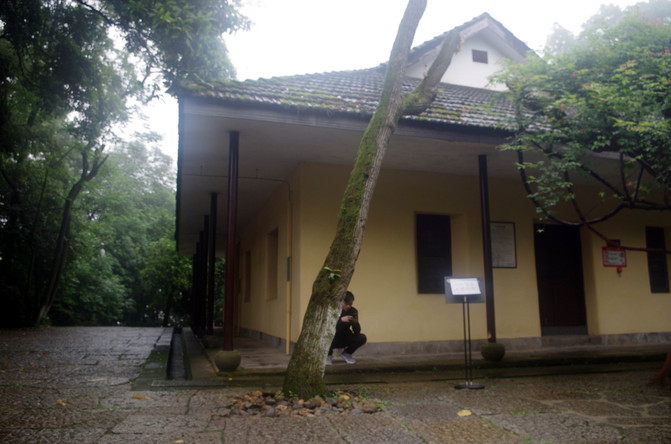
The above picture shows the attendant room,

Here, Chongqing has also built a comprehensive exhibition hall, which is actually a text and image introduction specifically introducing the history of Chongqing during the Anti Japanese War. If the old buildings have long disappeared, you may find them here.

This museum is divided into several sections, including the political center, factory relocation to Chongqing, education relocation to the west, wartime capital, anti Japanese fundraising, Chongqing bombing, and Japanese surrender. Introduce the overview of the temporary capital in the midst of war through pictures and text. It is the best place to understand that period of history.

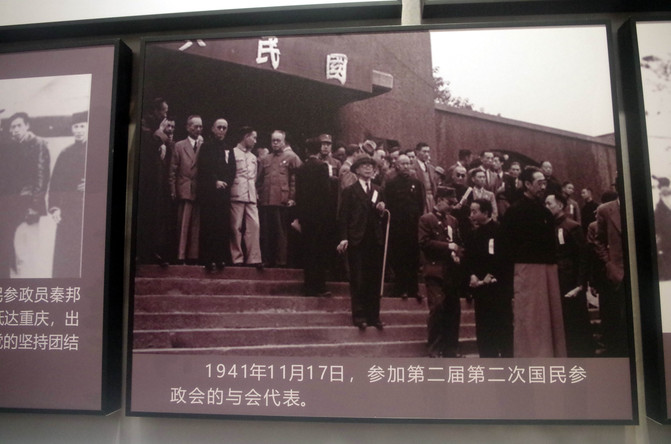
The above picture shows the situation of the Second Political Consultative Conference held by the Republic of China government in front of the National Government Building in Chongqing. Now, I wonder if this building can still be traced?

The above picture is a picture of the building located in Nanshan at that time.

The former site of the Executive Yuan of the National Government (equivalent to the State Council).

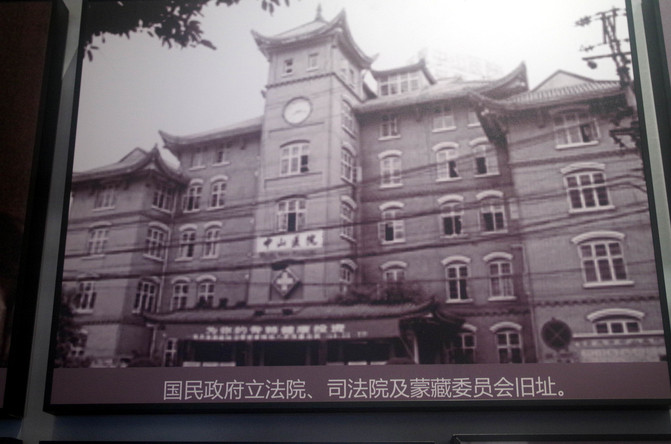
Do you know if this building still exists?


The above picture shows the roadmap of various Chinese governments relocating westward.




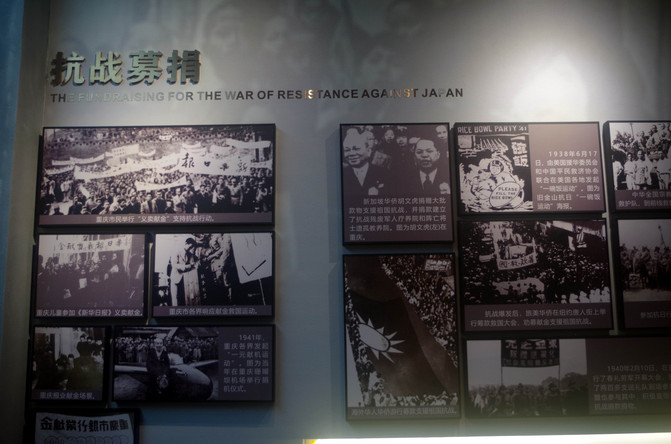
In order to resist the war, people all over the country donated money and goods. I remember it was Chang Xiangyu, who even donated a plane.

This is Yunxiu Tower, the official residence of Chiang Kai shek.
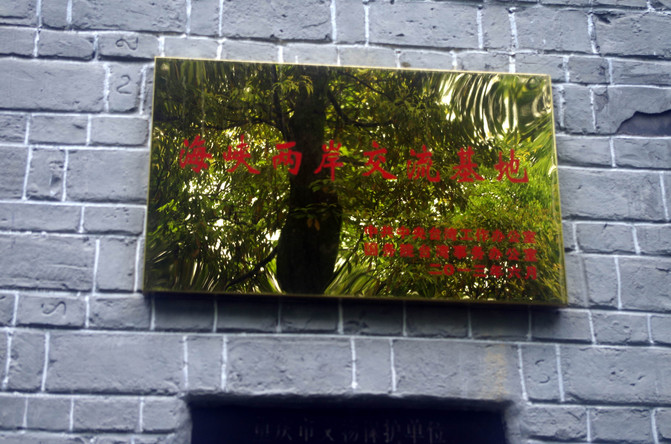
Jiang Mansion has now been designated as a cross-strait exchange base.




Caoting was a guesthouse of the Chinese Military Commission. At that time, most of the senior anti Japanese generals from various regions would stay here when they came to Chongqing.

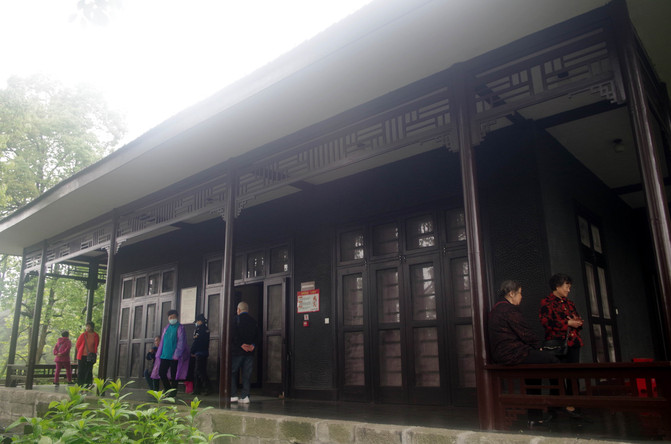
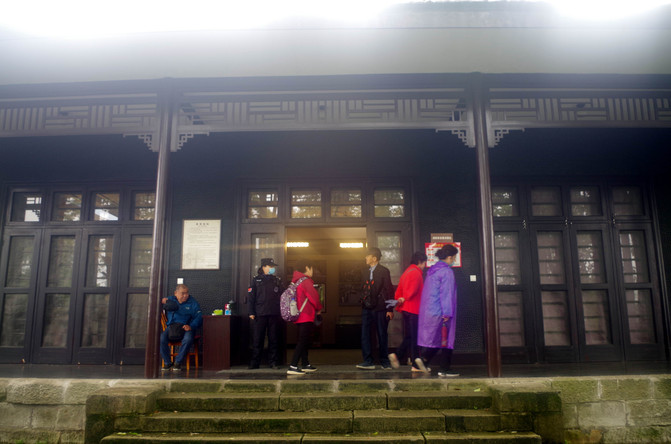
Lianqing Tower is the headquarters of the Joint Staff Headquarters of the US military.




As I was about to leave the memorial hall and pass by the Taiwan Liberation Monument Square, I heard an old man singing "My Home is on the Songhua River in Northeast China" in a high pitched and mournful voice. Although there were not many visitors, everyone stood down to listen and applauded. The Chinese people, no matter how great the internal contradictions are, will unite and fight fiercely against foreign aggression once encountered - a strong sense of national identity cannot help but surge in my heart.
The second place I searched for was the Zhazidong Concentration Camp and Bai Mansion under Geleshan Mountain. Nowadays, the Bai Mansion is undergoing major renovations and is not open to visitors, only the Zhazi Cave is open to visitors. Due to it being the only red scenic spot for one-day tours within the city by travel agencies, the crowds are surging.
In the late Qing Dynasty, a coal mine was discovered under Geleshan Mountain in Chongqing, where a boss hired workers to dig coal. As a result, the quality of the coal was too poor, and the common people called the hole where he dug coal the Zhazi Cave.
During the Kuomintang era, in order to detain political prisoners, the authorities converted the work sheds there into prisons and used the office space as prison offices and guard rooms.

Now, seventy years have passed, and the constantly growing trees have turned this place into a shaded paradise, like a paradise on earth. But as we walked in, we saw the places where many revolutionary martyrs sacrificed their lives. Especially when the People's Republic of China was established, some revolutionary martyrs like Jiang Jie were brutally killed without being able to witness the founding ceremony.

This is the situation inside the prison cell.


This is a photo of 13 revolutionary comrades who escaped from danger at the time of liberation.

This is a photo of a martyr who sacrificed their life.


From the outside, those who don't know may think that the Zhazi Cave inside the big wall is a villa.




In the courtyard of the detention room, I saw slogans written by prison leaders on both walls, filled with a tone of flattery and deception.

A tour guide joked that some officials in China now have this kind of face.

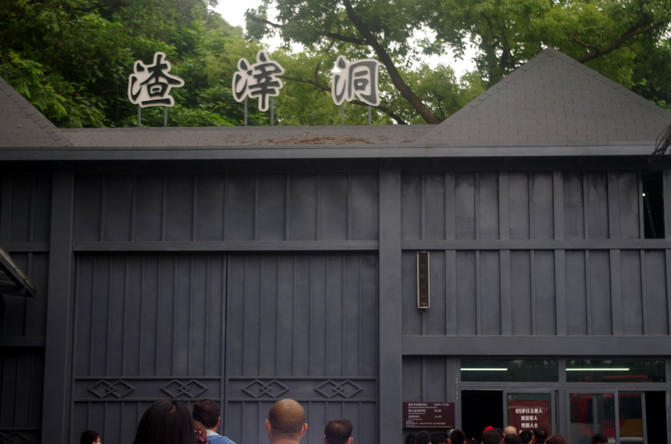
The third place is Hongyan Village, which is exactly called the Eighth Route Army's Chongqing Office. During the War of Resistance Against Japan and at the beginning of its victory, this was an important office of the Chinese Communist Party located in the wartime capital, as well as a stronghold for fighting against the Kuomintang. Now it has been converted into the Red Rock Revolution Memorial Hall.




The following picture is a photo of Rao Guomo.

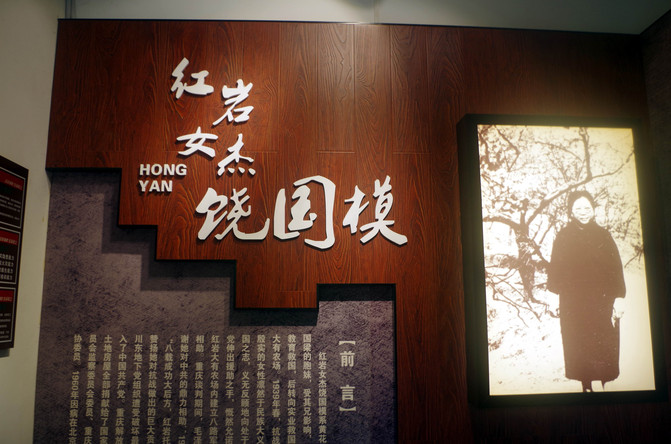

The following picture shows Comrade Deng Yingchao mourning in front of Rao Guoheng's tomb
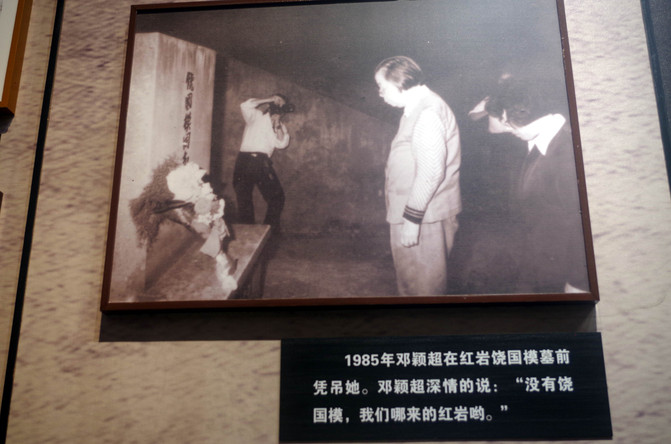
In 1985, Deng Yingchao paid his respects to Rao Guomo in front of her tomb in Hongyan Village, Deng Yingchao said, without Rao Guomo, where would we have come from Hongyan.
Hongyan Village is located by the Jialing River in Yuzhong District. This was originally the home of Chongqing female industrialist Rao Guomo. She strongly supported the Communist Party's ideas and knew that the Eighth Route Army was preparing an office. She resolutely presented the farm to Zhou Enlai.


The above picture shows the former site of a thatched cottage, which was originally the residence of a large farm worker. When the Southern Bureau moved to Chongqing, Dong Biwu used to work here.

The picture above shows the former site of the auditorium, When Chairman Mao went to Chongqing for negotiations, he met with comrades from the Southern Bureau, the Eighth Route Army Office, and Xinhua Daily News Agency here





This is a photo of Zhou Enlai with the staff in Hongyan Village.



A photo of Zhou Enlai and Deng Yingchao hanging at the entrance of Hongyan Village back then





There is also a cemetery in Hongyan Village. Here lies the buried revolutionary comrades who passed away while working there.
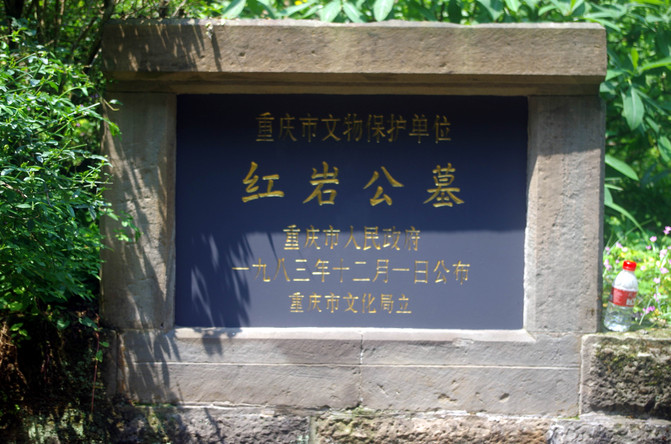

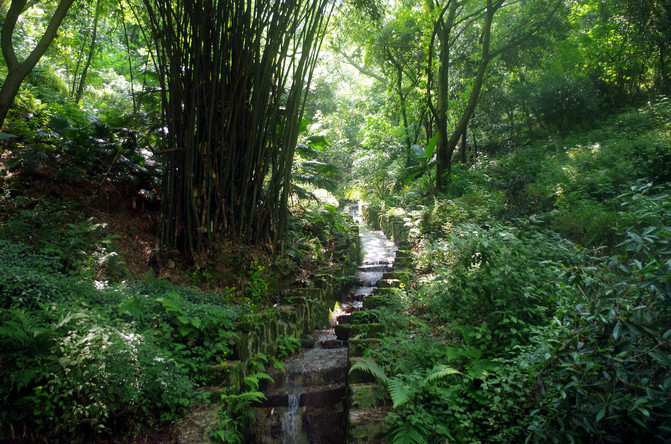
The above picture shows the path taken by Mao Zedong.


The above picture shows the water well in Hongyan Village.

This is the air raid shelter in Hongyan Village. When Japanese planes come to bomb, the staff will enter the shelter.
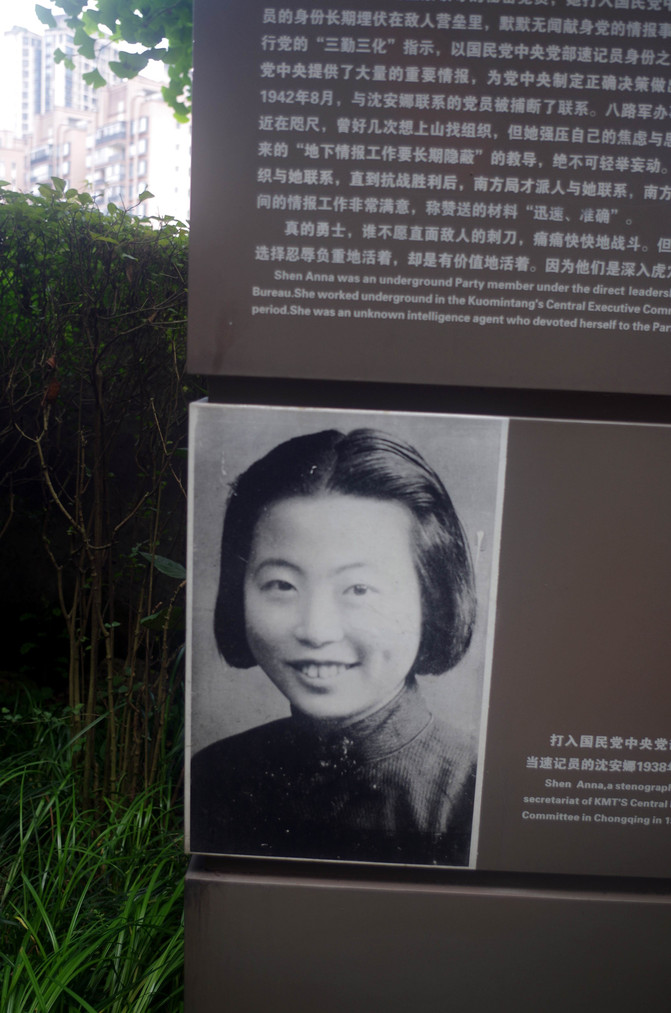
On the small path of Hongyan Village, there are still many photos of our party's secret workers standing. The person in the picture is Shen Anna, who was appointed by the party to enter the top ranks of the Kuomintang while in Chongqing and became a stenographer for Chiang Kai shek's important meetings. As a result, every move of the Kuomintang can be accurately and promptly known by our party. Thus, it won the smooth progress of the Liberation War. Shen Anna returned safely when she was liberated and lived to be over ninety years old.



The fourth thing to look at is the former site of Xinhua Daily News Agency.

The former site of Xinhua Daily News Agency is located near my hotel (near Linjiangmen), just a three story small building facing the street. It is still painted in dark gray with the colors of that era. It is said that there are offices, printing workshops, etc. inside. However, it is currently undergoing major repairs and is not open to visitors. Back in the day, this place became the mouthpiece of the Communist Party in the Nationalist controlled areas, and although the newspapers were small, they had a great reputation. It opened a window for the people in the Nationalist controlled areas to understand the new trends in the Shaanxi Gansu Ningxia Border Region, and also brought hope for the birth of Xinzhong.

The fifth one is a scenic spot that I happened to pass by - Zhou Mansion.



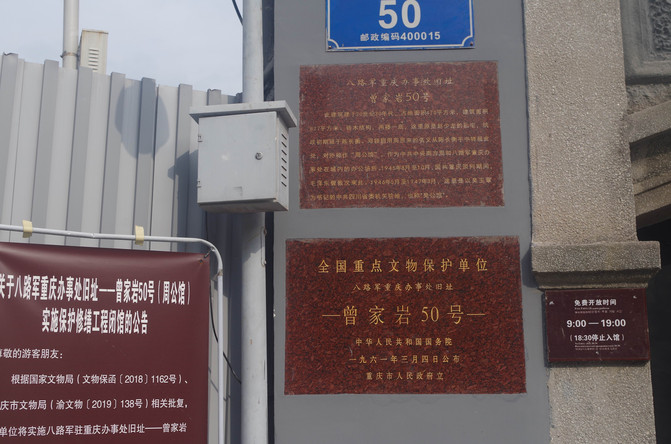
Zhou Mansion is the residence of Zhou Enlai during his time in Chongqing, located at No. 50 Zengjiayan, Yuzhong District. It is reported that this place is very close to the Chongqing Municipal Government of the Kuomintang and is also adjacent to Dai Li's mansion, surrounded by numerous Kuomintang secret agencies. It was here that Zhou Enlai led many of our party's secret work and made many unknown contributions to defeating the Kuomintang.
The sixth attraction to visit is a chance encounter - the Liziba Anti Japanese War Site Park.
This is when I was taking a bus from Hongyan Village back to the hotel and transferring to the light rail at Liziba Station. Suddenly, I saw a sign on the roadside that read 'Liziba Anti Japanese War Site Park', so I gave up the idea of returning to the hotel and walked in.



This is a group of buildings along the Jialing River.
Among them are Liu Xiang Mansion, Li Gengu Mansion, Gao Mansion, Construction Bank, and the former site of the National Government Military Senate.


The above picture shows the residence of Liu Xiang, who served as the governor of Sichuan Province and the commander-in-chief of the Sichuan Army during the Nationalist period.


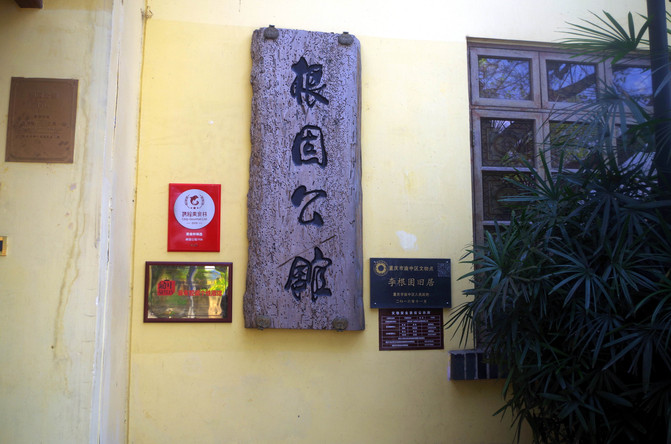
The residence of the fierce anti Japanese general Li Gengu.
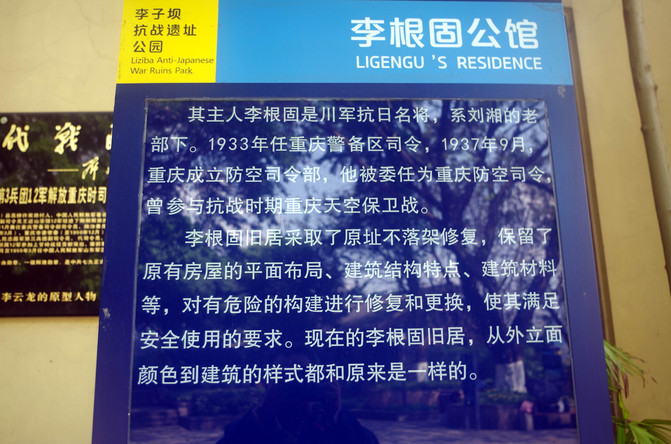



Now, Li Gengu Mansion has been transformed into a bar.


The above picture shows the former site of the National Government Military Senate.



The seventh attraction I visited was the Red Guard Tomb.
This is the Red Guard Tomb located not far from Shapingba in Chongqing, within Shaping Park. I came to see it briefly in 1985. The vigorous Cultural Revolution movement once triggered a nationwide wave of martial arts battles. No one knows how many young students and workers died nationwide due to the martial arts struggle. I only remember that after the end of the Cultural Revolution, various places erased the trauma of the armed struggle and also leveled the Red Guard tombs built in many places at that time. It is said that there were over 500 young people who died buried in Shaping Park at that time. When someone suggested to remove them, it was the famous literary figure Mr. Ba Jin who suggested to the central government to preserve the only Red Guard cemetery in China and leave a mirror for history. So there was this place called the 'Red Guard Tombs'.

There is a statue of Mr. Ba Jin standing in a small square near Shaping Railway Station.


This is the entrance of Shaping Park.
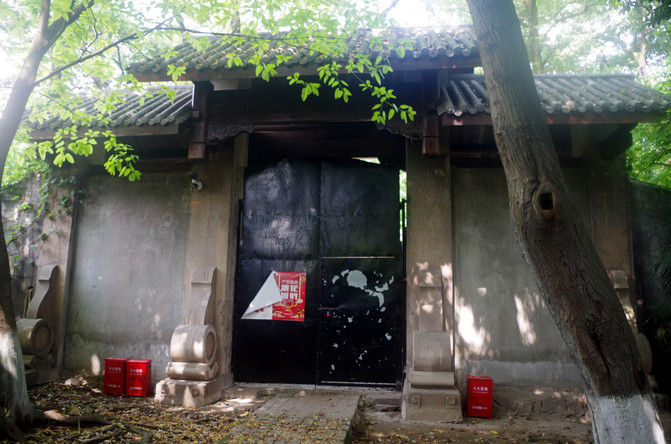
The Red Guards Cemetery is located in the western part of Shaping Park. This is the gate of the Red Guard cemetery, tightly locked and no one is allowed to enter. When I came back, it was still open, with graves of all sizes and various styles of tombstones inside.

The path leading to the gate is now blocked. An old man from the park said that only relatives of the people buried here who hold their family certificates can be allowed to enter the temple for worship by the authorities, which is also very humane.


From outside the wall, you can also see tombstones hidden in the forest.
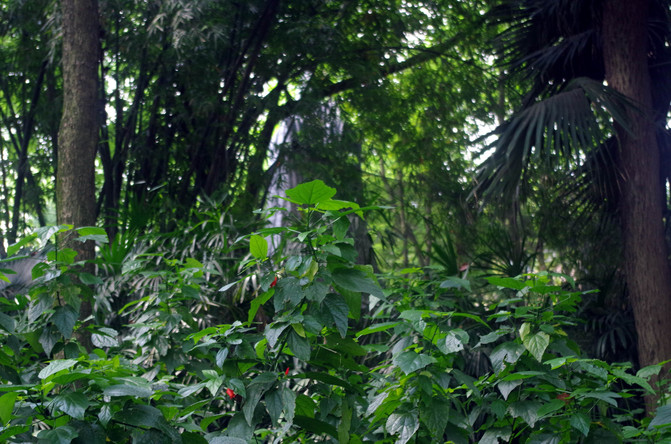




The sculpture of a beautiful woman outside the high wall, leisurely tourists, everything returns to peace.

When it came to 1985, there were only some small trees here. Outside the high wall, you could see a line of words written on the wall - 'Whose child is sleeping here?'. Now, this line of text can no longer be seen, perhaps it has been erased or blocked by the forest.

Outside the Red Guards' tomb, leisurely people danced as if nothing had ever happened.
I hope our people can live this peaceful life forever and not have that human tragedy happen again.
From April 20th to 28th this year, for a total of 8 days, including airfare and accommodation fees, I spent a total of 4000 yuan., In addition to participating in individual guest groups and taking a two-day break, I also spent two days wandering around Chongqing city on my own, which can be considered a successful and in-depth trip.
Next Article:Chongqing Urban Renewal | Zengjiayan Cliff Trail: Connecting History and Today's Ridge Line (Part 2)
